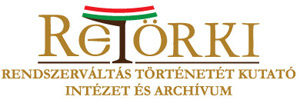Domján Dániel Ferenc: Kényszerpályák és külön utak. Hírszerzés, diplomácia és a magyar–jugoszláv kapcsolatok 1945–1956 - RETÖRKI Könyvek 48. (Budapest, 2022)
Summary
220 Kényszerpályák és külön utak 220 Summary The history of the Hungarian–Yugoslav relations between 1945 and 1956 has a relatively rich Hungarian literature, but unfortunately in the ex-Yugoslav countries the historians didn’t take much interest in the topic, therefore the specialized literature is not as significant as in Hungary. The primary sources of the book are the documents located in the Hungarian archives, mostly in the National Archives of Hungary. Among other things, I researched the papers of the Hungarian Ministry of Foreign Affairs and the papers of the Hungarian Embassy in Beograd. Unfortunately, the document located in the Serbian archives are only partly researchable or completely unresearchable. The documents about the intelligence services and the “intelligence-war” are very special forms of the historical sources. There are plenty of documents in the Historical Archive of the State Security Services about the Hungarian–Yugoslav relationship, but the analysis and the assessment of the documents is complicated. First of all, there is no possibility to compare the statements of the papers with the similar papers found in the Serbian archives. Secondly, the documents were born in a conspirative environment, therefore the statements in the papers didn’t always meet with the real world’s events. Furthermore, the documents are not complete, over the decades a lot of the papers were destroyed or simply disappeared from the archives. Beside the problems detailed above, in my opinion the usage of the state security papers is reasonable because it introduces other aspects of the conflict, too. The reports of the Central Intelligence Agency (CIA) are researchable online. To this day lots of documents are still secret, but the researchable papers show us a third point of view to the events. The history of the Hungarian-Yugoslav relations between 1945 and 1956 has been split in four parts in the book, mostly in chronological order. The first part is from the end of the war until the decision of the exclusion of the Yugoslav Communist Party from the Cominform in July 1948. The next two parts are about the relationship during the conflict, while the fourth bigger part is about the process of the normalization between 1953 and 1956. The first part of the book mostly leans on the literature; however, it has been completed by the result of the new resources, because the documents of the Hungarian Embassy in Beograd gave a lot of new information. The papers of the state security services provided several new information about the conflict and about the incidents happened at the
